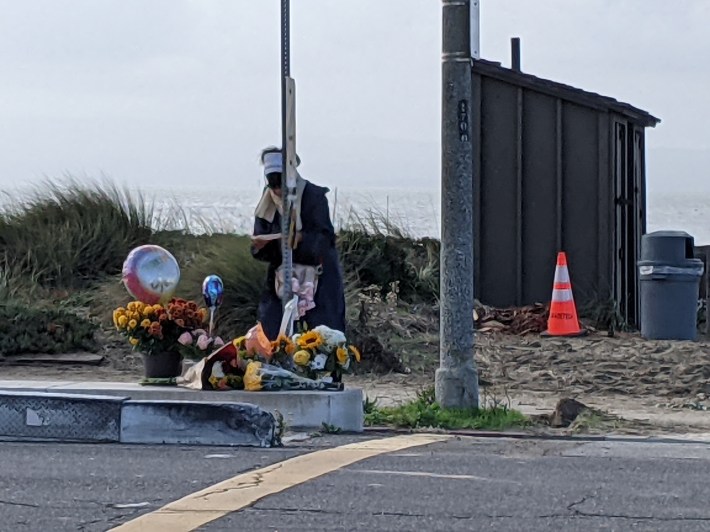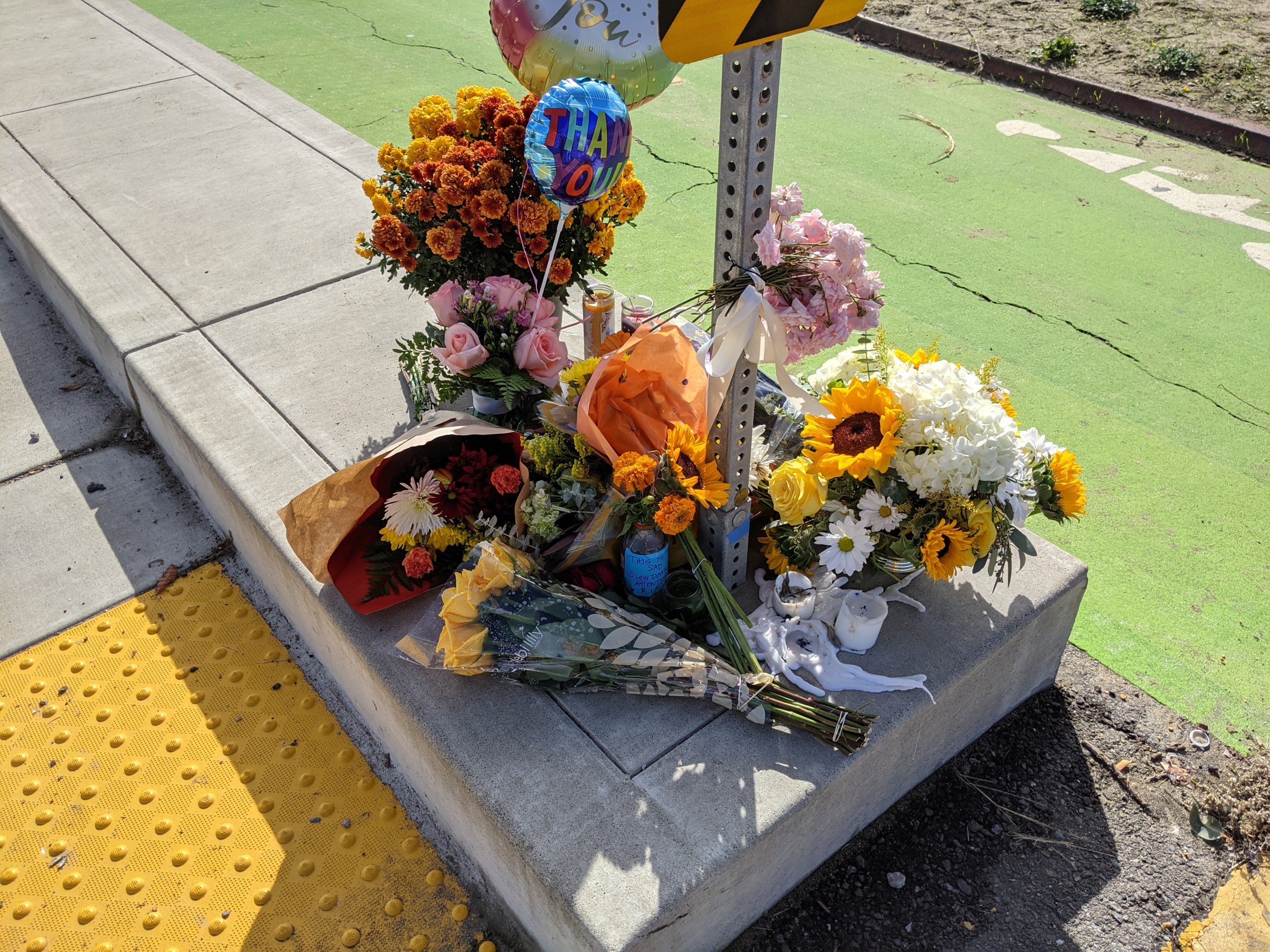Alameda County Supervisor Wilma Chan, 72, was crossing the street at Grand and Shoreline in Alameda Wednesday just after 8 a.m. when a motorist struck her, causing a fatal head injury.
Investigation underway after pedestrian Is struck by a motorist.
— AlamedaPD (@AlamedaPD) November 3, 2021
The cause of the collision is yet to be determined. The investigation is ongoing and no additional information will be released at this time. https://t.co/fscAJC4ZAX pic.twitter.com/CYOWDaxQgS
"It’s going to be a huge loss," said Denyse Trepanier of Bike Walk Alameda, in a phone interview with Streetsblog. "Ms. Chan was killed by a driver near what has been identified as a high-injury intersection in Alameda's Vision Zero Action Plan."
Today we lost Alameda County Supervisor Wilma Chan, an incredible leader for children and families.
— Rebecca Saltzman (@RebeccaForBART) November 4, 2021
It’s unacceptable that our streets are too dangerous to take a dog out for a walk. We must make our streets safer for everyone.https://t.co/TVUt2PFs5C
"The tragic killing of Supervisor Chan marks the second year in a row that Alameda has experienced at least four traffic fatalities, over twice Alameda’s average. More people are killed and injured by people driving in Alameda than any other type of illegal activity," wrote Alameda City Councilperson John Knox White, in a text to Streetsblog. "Enough is enough!"
Alameda Police are still investigating the crash. Lieutenant Alan Kuboyama, a spokesperson for the department, told Streetsblog that the motorist, who was driving an SUV, was proceeding straight on Shoreline. From what Streetsblog could determine from an investigation of the scene and marks on the pavement, Chan was in or near the crosswalk at the time of the collision and was either propelled forward by the impact or rolled off the hood of the SUV and hit the pavement.

Given the time of day, glare from the morning sun may have been a factor, confirmed Kuboyama. But as Streetsblog has pointed out in previous posts, if the driver was blinded by glare, the correct action is to immediately brake.
I didn't see them it was:
— Tom Flood (@tomflood1) November 3, 2021
Too dark
Too bright
Too rainy
Too snowy
Too foggy
Too sunny
Dusk
Dawn
You have one job and it's too see. If you can't see, don't drive.
Trepanier, meanwhile, told Streetsblog that this latest tragedy is a testament to how much work there is to do make streets safer. The intersection needs raised crosswalks or a speed table and other measures to force motorists to slow down. But reducing traffic violence will require a multi-faceted approach. "Everyone’s looking for this one root cause they want to blame for not fixing - but it’s cars."

In Streetsblog's view, Trepanier is absolutely right. A key and often overlooked component of traffic safety is reducing motor vehicle use--period. Our streets are like a giant game of Russian Roulette. And every tool possible has to be used to reduce the number of fatal shots. One of those has to be to make it easier to bike, walk, and use transit--and harder to drive--so fewer opportunities exist for motorists to kill vulnerable road users in the first place.
And yet, agencies such as the Alameda County Transportation Commission, on which Chan served, have continued to prioritize car speed and throughput at the expense of safe pedestrian and bicycle infrastructure. As a result, more people are forced to drive as their primary means of transportation throughout the Bay Area. More miles driven means more people killed. That's clear from the fact that when the economy is strong, more people die in crashes. When gas prices are low, more people die in crashes.

Even now, work continues in Alameda County on adding car throughput to the Webster and Posey tubes while a project to build a bike and pedestrian bridge between Oakland and Western Alameda languishes. Messed up priorities such as that bring more cars to Alameda. More people die as a result.
"We have to follow the example of Mayor Anne Hidalgo of Paris," said Trepanier, referring to recent, aggressive moves in Paris to close more and more lanes to vehicles and create safe space for walking and biking. "Traffic safety is a Gordian Knot that we must unravel."





